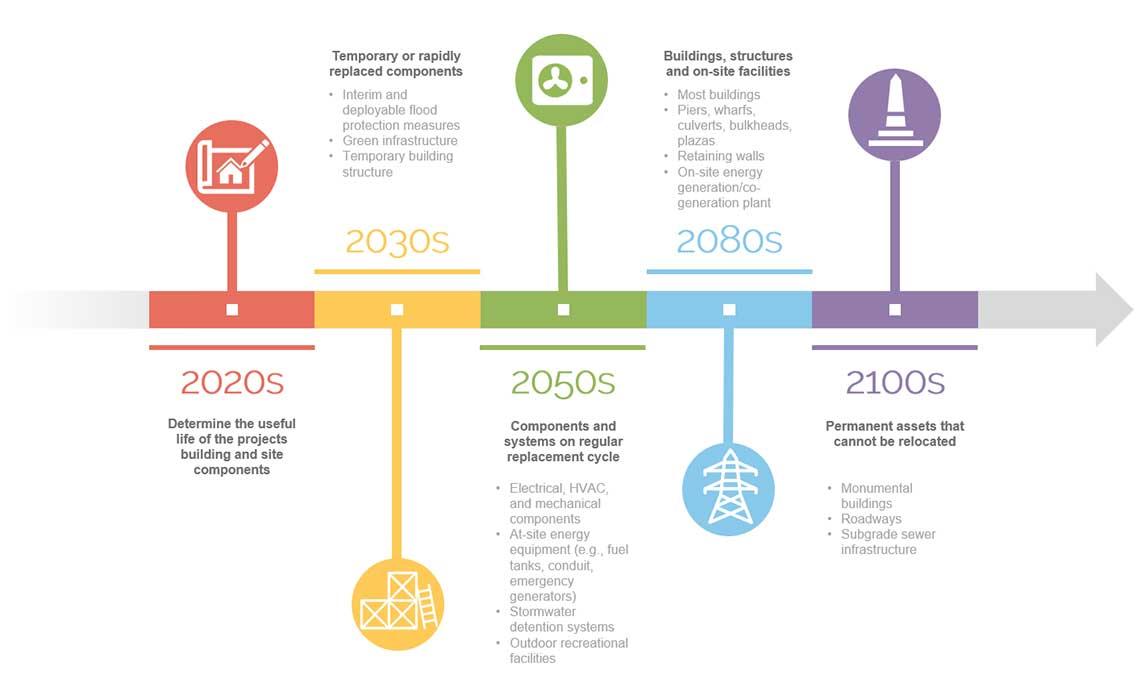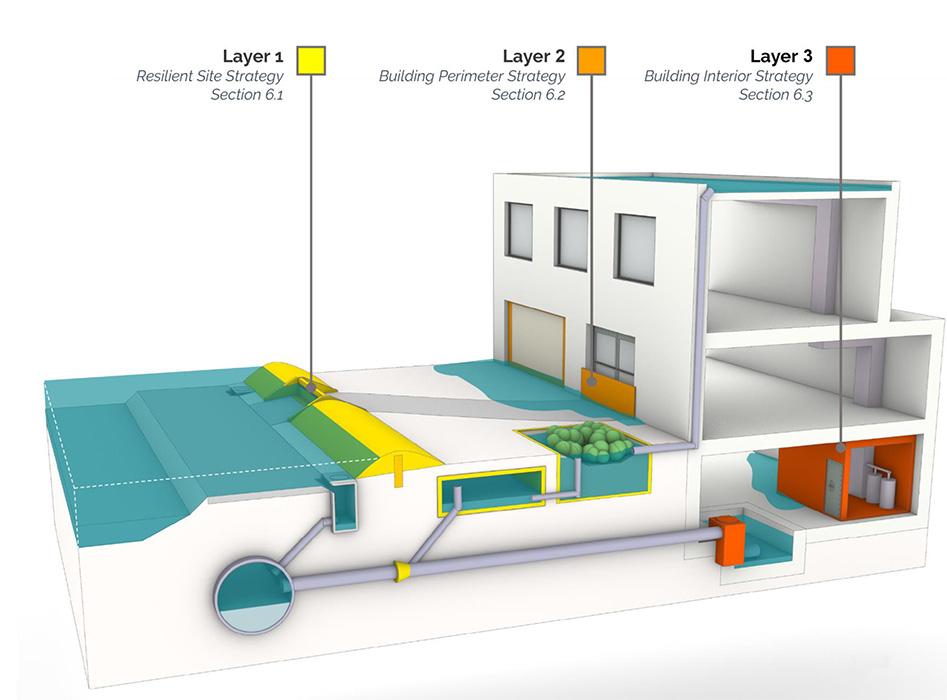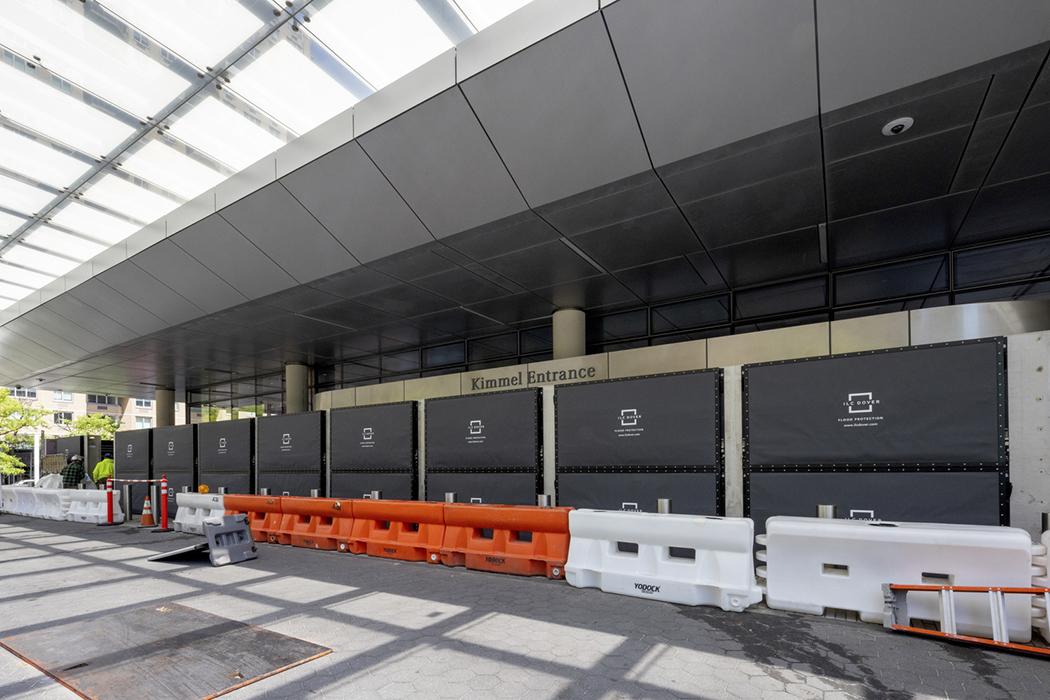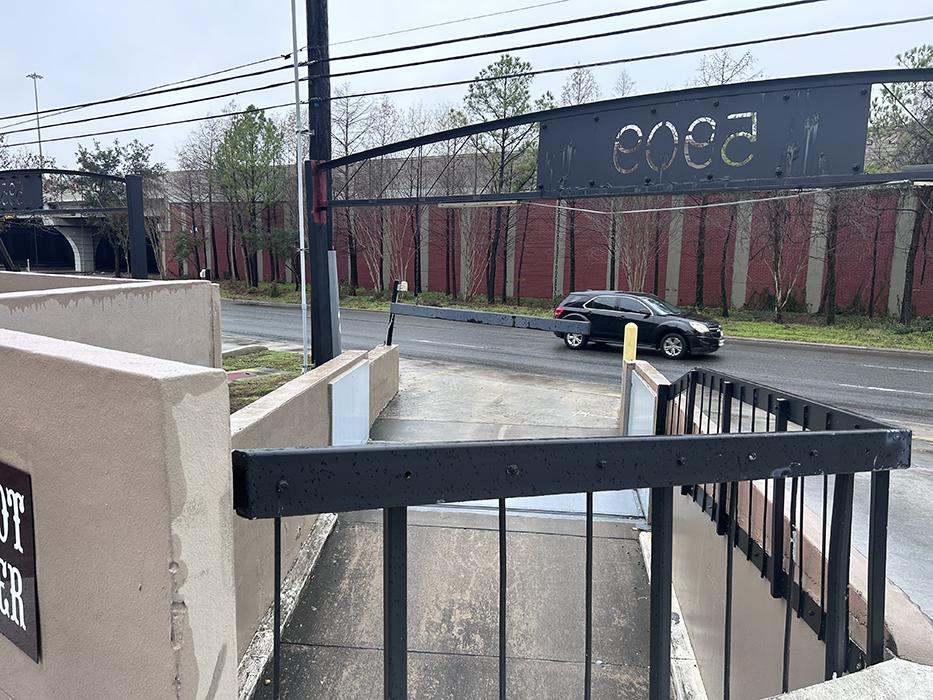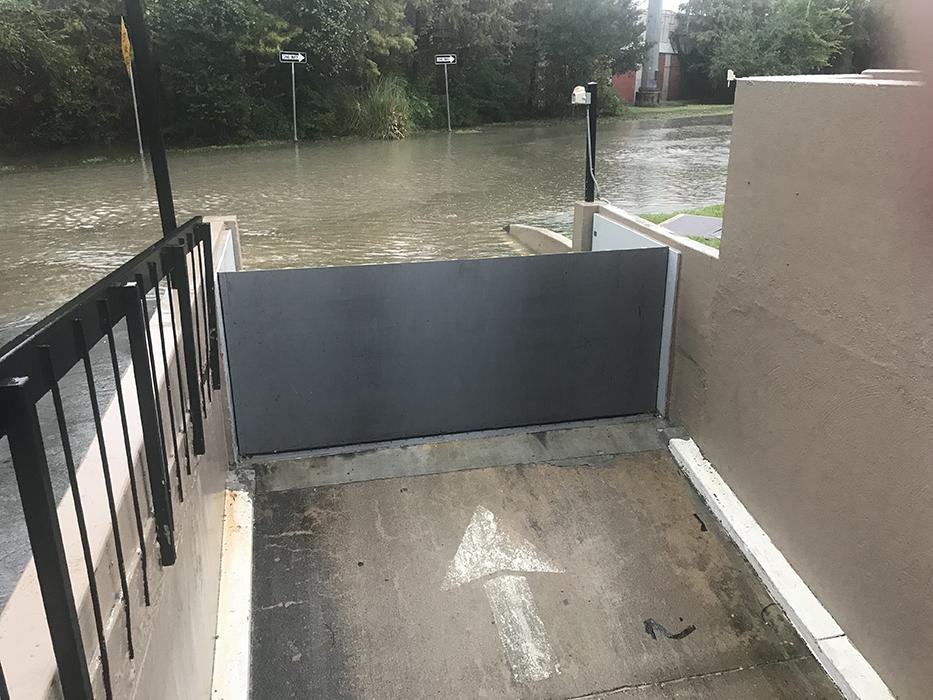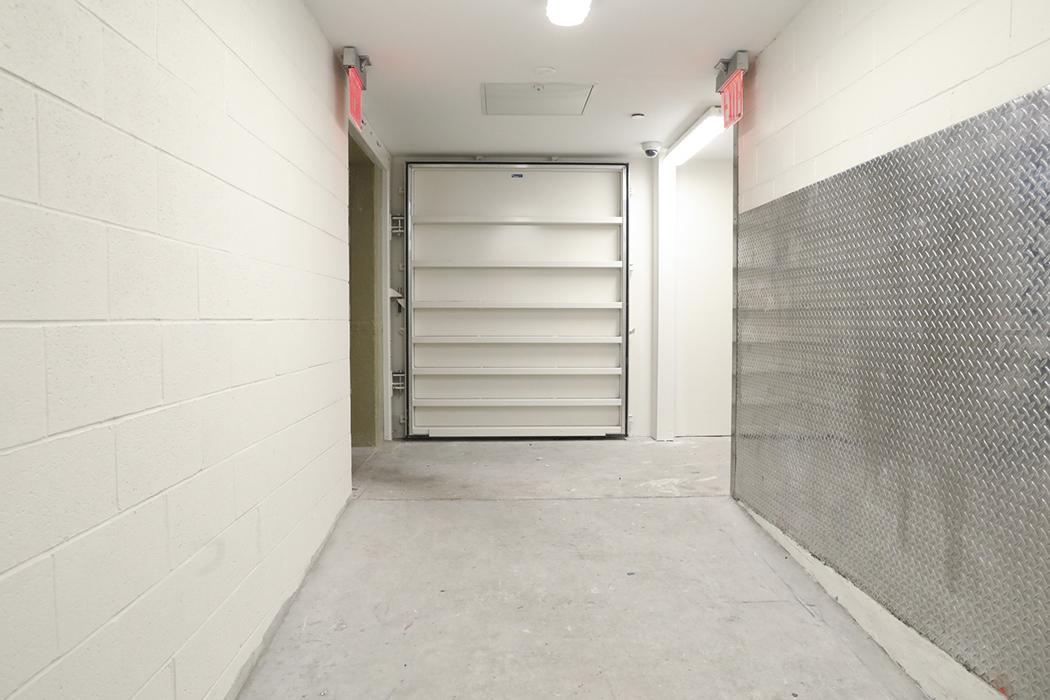Climate Action: Resilience Strategies

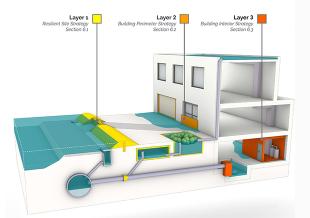 Thornton Tomasetti
Thornton Tomasetti
An effective resilient design strategy relies on elements of adaptability and redundancy. Considering the significant uncertainties in climate projections, adaptability involves creating a foundational design for buildings and infrastructure that allows for easy and cost-effective modifications in future. Equally crucial is redundancy, which ensures that buildings can revert back to normal operations as quickly as possible and with minimal human intervention. This week in our continuing series showcasing how engineers and scientists can play a key role in addressing the short- and long-term challenges of climate change, we look at what these strategies entail, which includes designing for future retrofits and multi-layered approaches to flood protection.
Expanding upon previous posts on climate risk assessments and recovery-based design, the information gathered from these steps informs the design of resilience strategies. Two key aspects of resilience strategies are:
- Adaptability for future conditions and related uncertainty
- Redundancy
Planning for the remaining useful life of a building and its associated infrastructure as well as accounting for future hazard levels is critical for the development of resilience strategies. The graphic below is a helpful tool in understanding which useful life timelines are applicable to buildings, infrastructure and related components, and which timeframes of climate projections could be relevant.
Adaptability
Adaptability refers to a solid foundation upon which future improvements can be made with the lowest cost and effort. An example of adaptability for building structures is designing the base building to account for extreme climate projections: In the case that any retrofit needs to be made in the future, the base structure does not become a weak point.
It must be noted that there is a lot of uncertainty in climate projections, and we can only the use the best knowledge currently available to inform the design of our buildings. The further we look into the future, the higher the uncertainty. In the 2060s the difference in sea level rise projections between the ‘low’ and ‘high’ scenario is ~2’, but in the 2100s the difference is starker at ~6’. Given the variability, ensuring a structure is adaptable to accommodate any of these future scenarios is key to its performance and useful life.
Redundancy
It is critical to have redundancy in place when designing resilience strategies to ensure that normal operations can be restored within a building as soon as possible while minimizing human intervention. A typical example that we implement for our projects with respect to flooding is presented below:
Layer 1 – Resilient Site Strategy
Handle the flood waters at the building site level and prevent them from reaching the building in the first place. Typical interventions vary from flood curbs to earthen berms, flood barriers and detention/retention systems. An example of a passive flood barrier by FloodBreak that requires no human intervention can be seen in this video:
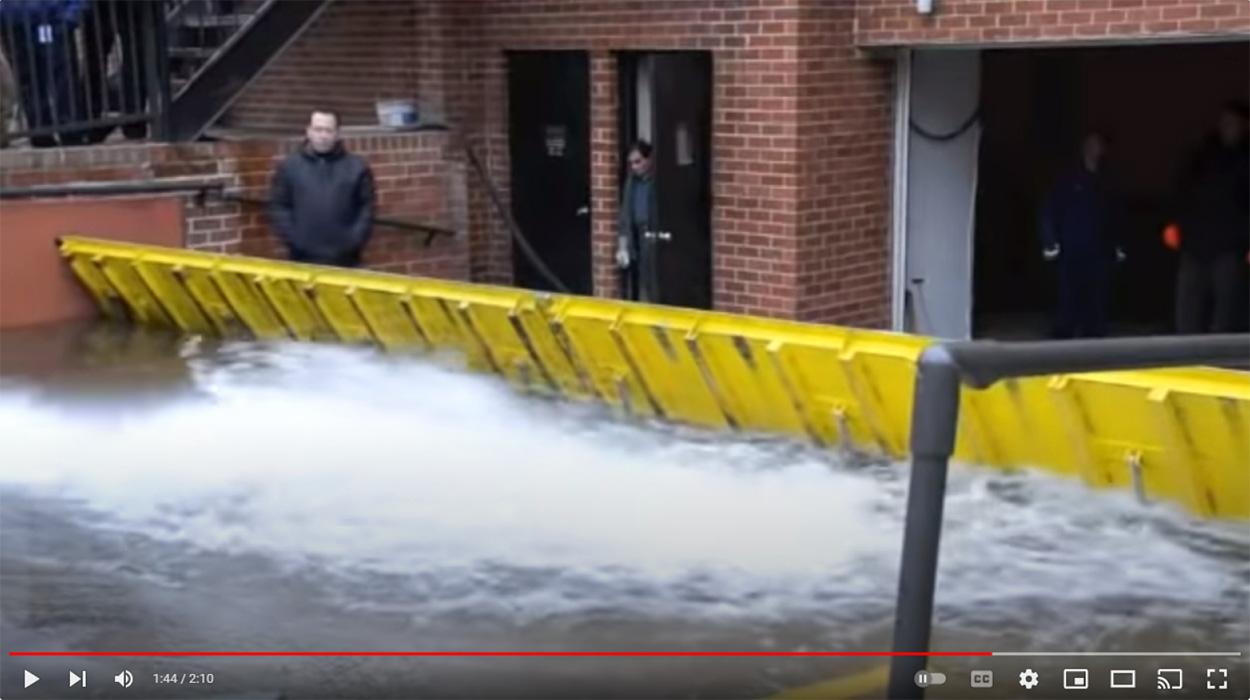
Layer 2 – Building Perimeter Strategy
Assuming Layer 1 is breached, prepare the perimeter of the building using reinforced waterproof concrete walls, passive or active flood barriers and sealing all penetrations. Several technical bulletins by FEMA are available that go into specific detail of protection strategies.
Layer 3 – Building Interior Strategy
Assuming Layer 2 and 3 are breached, protect critical infrastructure elements that are important for building operations to ensure that the building can be back up and running as soon as possible. This part is often overlooked and can make or break achieving the performance level desired by clients of immediate re-occupancy after a hazardous event.
This approach was specifically developed for flooding; however, it can be used to address a multitude of other climate hazards. The key concept here is building redundancy to provide additional lines of protection if there is a failure in any layer of defense.
Emergency Preparedness
Regardless of how effective and well designed a strategy may look on paper, the execution is critical to its success. A previous post provides a deep dive on emergency preparedness and the implementation of relevant protection systems.
Climate change is one of the biggest challenges facing our society. And because it affects everyone, it demands our creativity, passion and collaboration to build a better, more enduring world. See how Thornton Tomasetti is one of the only firms with the expertise to help you think holistically about a range of steps to address climate change.

